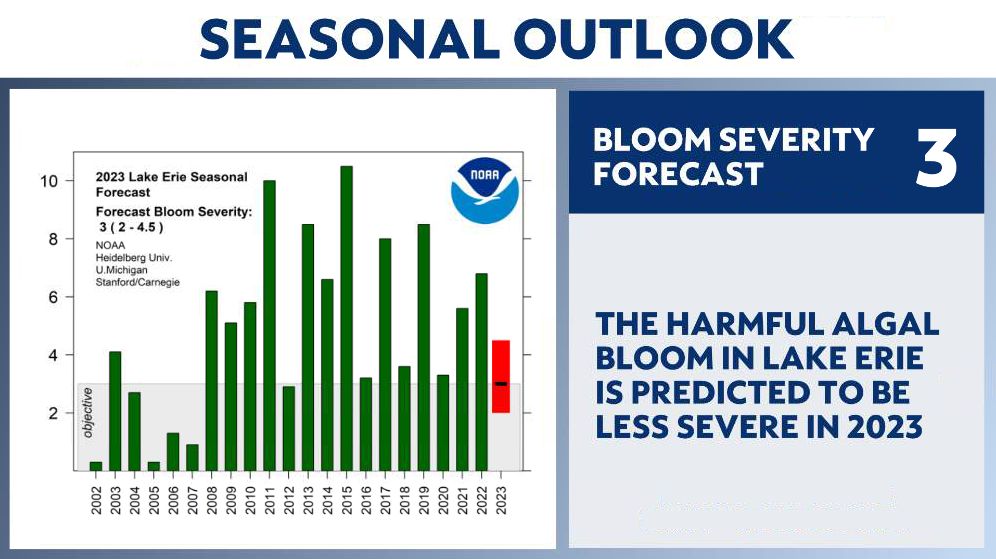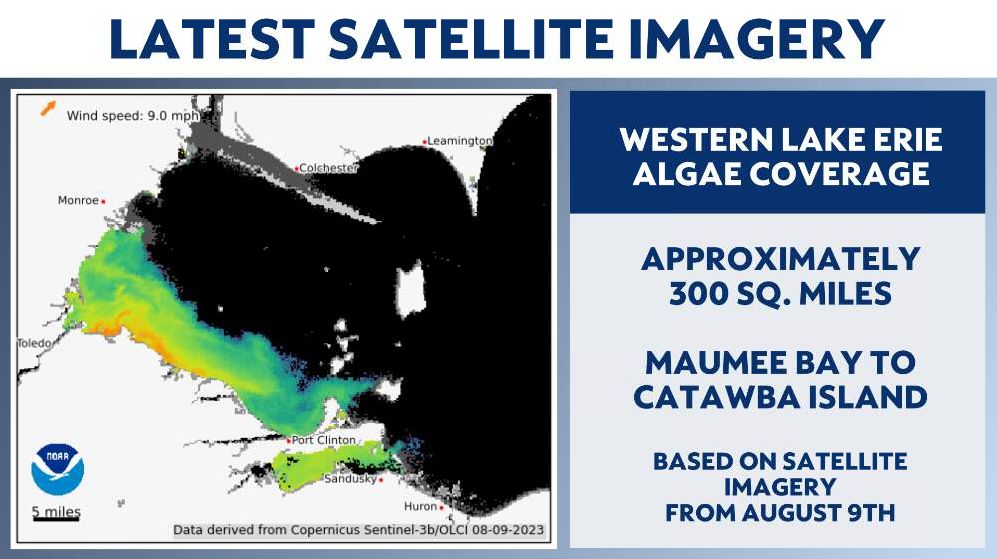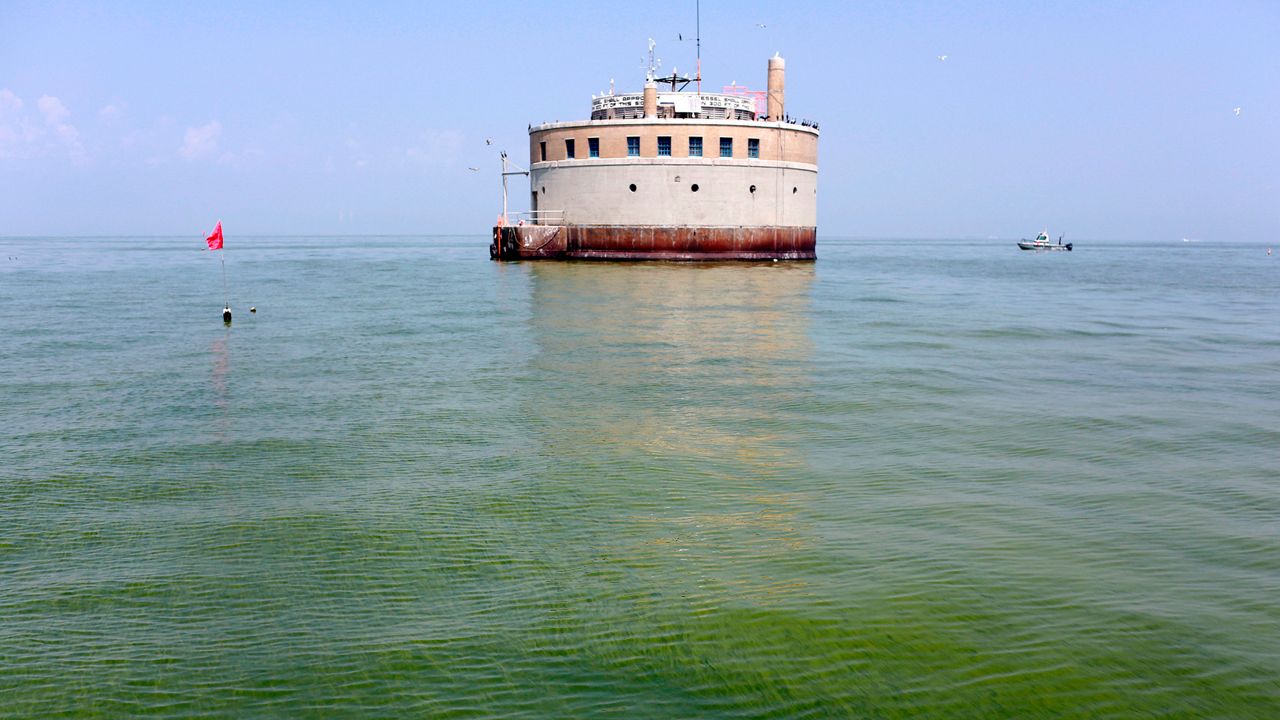Harmful algal blooms have become a regular occurrence in Lake Erie throughout the late summer and early fall. This year is no exception.
The shallow western basin of the lake experiences most of the negative impacts from the blue-green algae that grows during the warmer months. This includes the waters near Toledo, Maumee Bay, the Lake Erie islands and Sandusky Bay. Sometimes the impacts can reach as far as Cleveland.
Harmful algal blooms (HAB) differ from year to year and depend on many factors, both natural and human-caused. Some weather factors include air and water temperature, the amount and rate of precipitation and wind speed and direction.
Agricultural operations in the heavily farmed Maumee River valley are the largest source of phosphorous and other nutrients that the blue-green algae need to grow. Other manmade issues include wastewater treatment plants, septic tanks, lawns and golf courses.
For 2023, the Lake Erie harmful algal bloom is predicted to be smaller than usual and less severe than in years past. This is partly because of a lack of precipitation in May and June and the subsequent drought conditions that developed.
The lack of heavy rain limited nutrient runoff into the lake early in the growing season.

The bloom severity index is a scale from 0 to 10 that helps identify how impactful the algae may be. This year, a severity index of three is forecast, with a potential range of two to 4.5, depending on weather conditions through the rest of the season.
For reference, the bloom severity index was 6.8 in 2022.
In the record-setting years of 2011 and 2015, the index reached 10 and 10.5, respectively.
The most recent satellite imagery shows that the harmful algal bloom has grown across the western basin of Lake Erie. Between Aug. 4 and Aug. 9, blue-green algae has expanded in coverage from 220 square miles to approximately 300 square miles.
The extent of the algae includes the waters from Stony Point, Michigan to near Catawba Island and Kelleys Island here in Ohio.
Sandusky Bay also has a separate harmful algal bloom.

Even though toxins are presently below recreational limits, they can be highly concentrated within areas of scum. Using the satellite imagery above, areas that are orange and red show where scum is likely, especially during periods of calm wind.
It is advised to avoid going in the water, as these areas are most hazardous to humans and animals.
Our team of meteorologists dives deep into the science of weather and breaks down timely weather data and information. To view more weather and climate stories, check out our weather blogs section.



